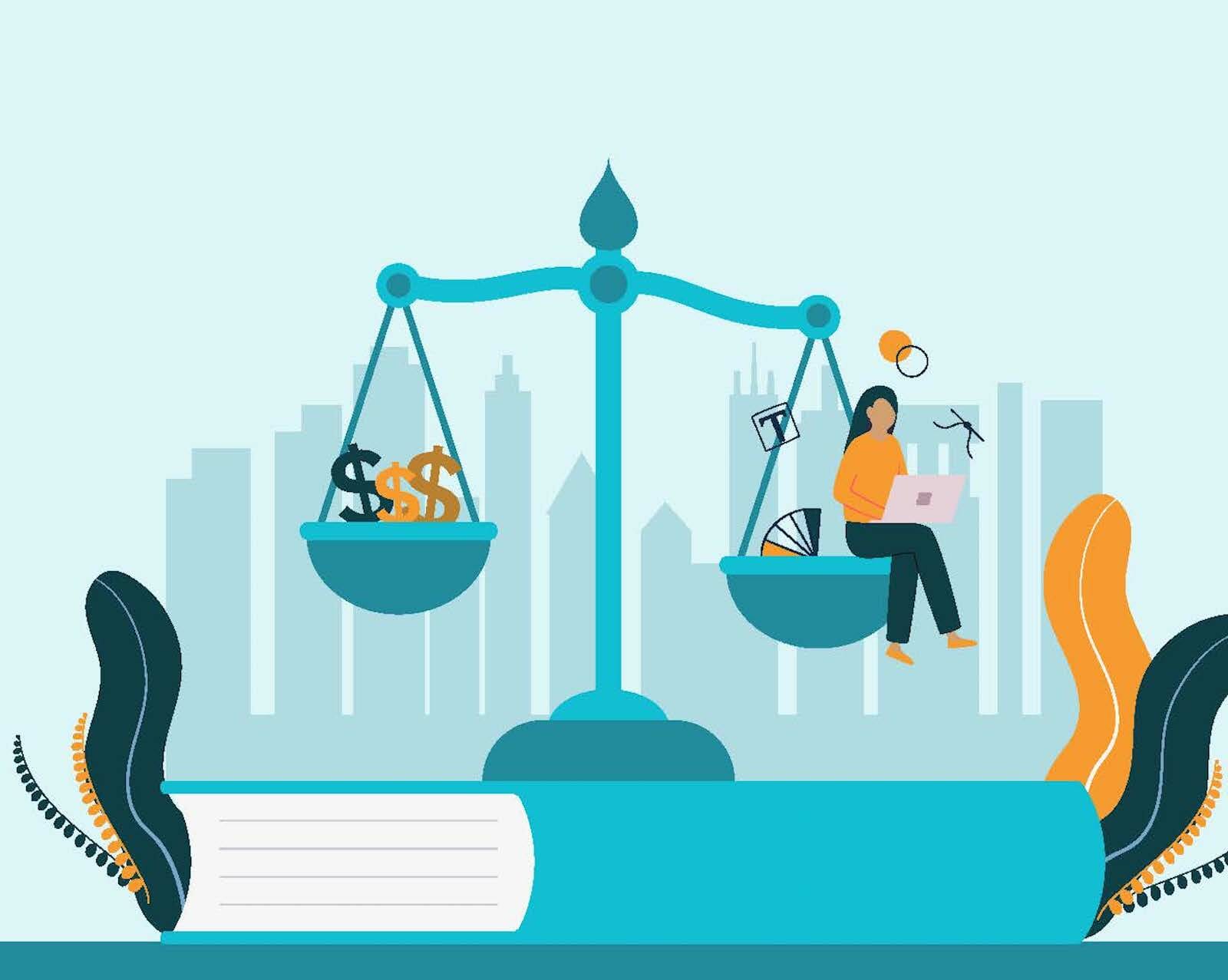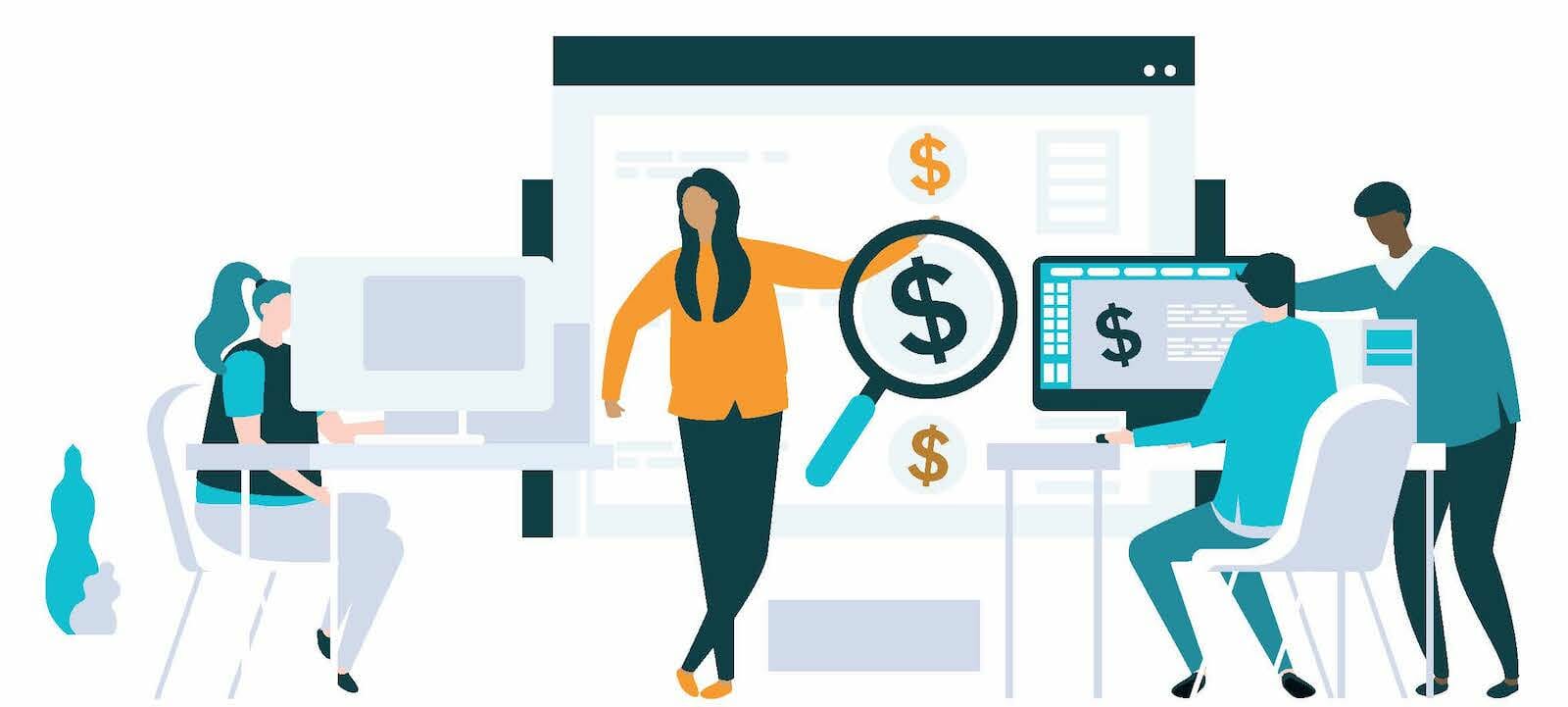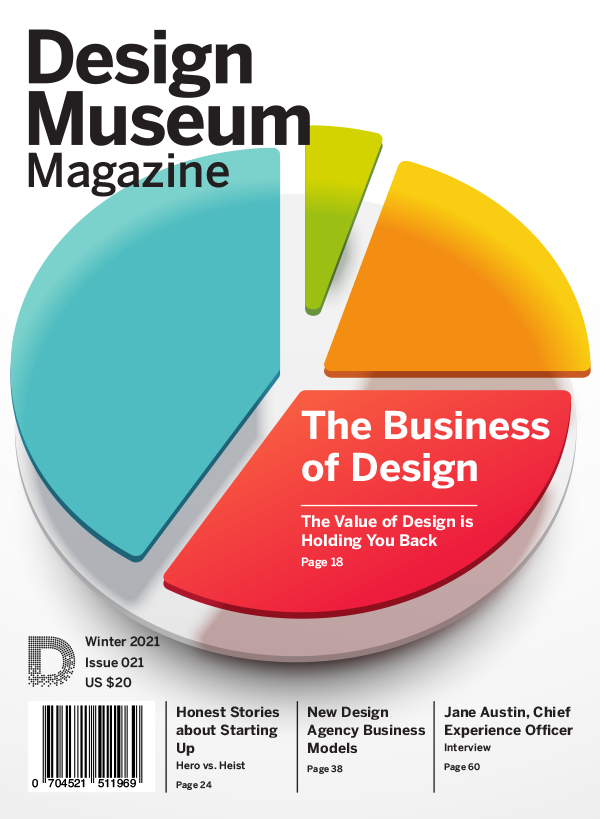The Value of Design is Holding You Back
Writing about the value of design has historically meant defending the business value of design as a justification for audiences who aren’t primed to accept the argument anyway.

By Jen Briselli, Chief Design Strategy Officer at Mad*Pow
The business value of design has been well established. But, the word itself, value, means so much more than the monetized definition imbued by capitalism. Value is actually quite an empathic, purpose–driven, and human–centered concept. It defines worth and usefulness beyond financial gains. Perhaps the focus on demonstrating design’s value is exactly what holds design innovation back.
Instead of retreading this worn ground, let’s shift the conversation from one centered on monetary benefits to one that moves people, drives change, and empowers excellence at multiple levels of an organization and the world itself. We don’t need another thought piece about the value of design – we need to focus on the design of value – and everything that entails, beyond the bottom line. Organizations that are still caught up defining or proving the “value of design” will be left behind – if they haven’t already. So what should they be thinking about instead?
Design is a Rhetorical Art
You’d be hard–pressed to find a successful executive or business owner who does not understand the importance of design in 2021 – if only for its role in identifying, prioritizing, and creating the products and services that solve their customers’ needs. But what many know about design may solely be based solely on a few meetings with design teams or perhaps a design boot camp or certificate course. So how can we fully appreciate the value of design in a meaningful way without knowing what it is?
The practical definition of design is a hotly debated topic – what is design? What makes a designer? Is it about aesthetics? Experiences? Services? Systems? There are many answers to that question, but at its core, design is an intervention – a deliberate process by which we navigate the chasm between current and future state. Design uproots and diverts the status quo to pave a better path forward – or so we hope.
Design is a meta–practice, a rhetorical art devoid of its own subject matter. To be a designer is to apply a way of thinking more than being an expert in any one domain. Design functions as connective tissue and enablement. It’s focused on audiences and outcomes, and we can learn a lot from another ancient art with a similar focus: classical rhetoric. More specifically, the concept of rhetorical stasis can shed some light on where the notion of “value” becomes a quagmire for design instead of powering it forward.
Stasis theory is not a new concept – it was developed by an ancient Greek rhetorician named Hermagoras, who lived in the 3rd century BC. Again in the 4th century, the theory was refined by Aristotle and later by Cicero in his book, Orator. The main idea is that when we engage in discourse, we do so at a certain altitude, or “stasis.”
To design is to devise courses of action aimed at changing existing situations into preferred ones — Herbert Simon

Contemporary categories of rhetorical stasis include:
Existence: Does a problem exist?
Definition: How do we characterize the problem?
Cause: What caused the problem?
Value: Is it good or bad? Effective/ineffective?
Action: What should we do about the problem?
Jurisdiction: Who should decide what we do about the problem?
In practice, these categories are usually explored and resolved in order. First, we must determine and agree whether something exists before we can move on to deciding whether it’s good or bad, should be addressed, and what should be done, if so.
In order for discourse to be productive, the participants need to be engaging at the same stasis. If one is arguing about the cause of a phenomenon while the other is arguing about its existence, not much progress will be made until they arrive at the same place, or stasis, to litigate the topic further. For example – if you are arguing about climate change and one person is arguing about whether climate change is caused by man, while the other is arguing about whether cap and trade is a viable solution, forward progress isn’t likely.
Whenever I witness an instinct or request to justify, explain, or sell the value of design, I am reminded of this rhetorical framework. It strikes me that value is an unproductive stasis for any discussion of design as a practice in 2021. Rehashing the question of the value of design is working at the wrong altitude altogether – just as arguing about the definition of design (or even its existence) holds us back from the more meaningful discourse. Organizations need to navigate design more intentionally in order to solve our most salient world challenges.
Let’s acknowledge that thoughtful design exists, is effective, and is needed for growth and sustainability. What’s more, design has been well demonstrated as providing value, no matter how you define it. Today’s most innovative and impactful organizations have left the arguments about definition and value to Twitter talking heads and are operating on another level altogether. They are navigating the what (action) and who (jurisdiction) of design, in order to build more equitable systems and empower people to solve their own problems.
Who designs? And how?
When we define design as meta-practice, a process without its own subject matter, we cannot use conventionally finite terms to identify a designer because design has no domain unto itself. User experience designers differ from industrial designers, who differ from graphic designers, who are nothing like service designers. But designers in each of these traditions have something in common – they apply their craft to serve as guides through an idea jungle.
Within communities of trained designers and initiated peers, debates have long persisted about who gets to call themselves a designer, what constitutes design, and whether we are makers or facilitators. Now more than ever, the design community is challenging itself to reframe its own tools and techniques to empower the latent design expertise each human holds within their lived experience.
This is the place where meaningful change is unfolding, not in the question of what design achieves, but in how and who drives it. It is no longer enough to simply study design methods and empathize with an audience; we must also acknowledge the blind spots inherent to the power structures in our work, to question our interpretations of “designer” vs. “user,” and to engage more of our audience as experts in their own experience.
This very real shift in the locus of expertise nudges designers away from:
“Let me understand how this looks and feels to you… now let me solve this problem for you by pretending to be you and layering my design skills on top to solve it.”
…toward something more like…
“Let me understand how this looks and feels to you… and now let me use that understanding to build tools with you so you can solve that problem for yourself.”
…and eventually to a lack of differentiation between me/designer and you/user:
“Let me understand how this looks and feels to you… and you can understand how it looks and feels to me, and we’ll design something together toward a shared vision.”
Social media debates and conference talks aside, empathy will continue to be the critical component in a design evolution that leads to a world where everyone designs – and our roles as facilitation design practitioners become more of facilitation than problem-solving. Certainly, we’re not there yet – our ‘users’ and ‘clients’ still need us to help design better experiences for others because there’s not always a path for those customers to create it themselves.
But as we shift toward a future with more egalitarian access and participation, it will mean we create products, experiences, and ultimately systems that are more flexible and socially sustainable in the long run. The organizations that stop spinning their wheels on definition and value, and instead work to solve precisely how to integrate this shift to action and jurisdiction, will be the ones to lead the next century of innovation.
The Future(s) of Design Value
So if you’re still stuck in an organization questioning the value of design, I’ll pose this question: what purpose are you designing for? What future are you building toward?
Whether you’re a bigger fan of Albert Einstein, “We cannot solve our problems with the same thinking we used when we created them.”
Or Audre Lorde, “The master’s tools will never dismantle the master’s house.”
Hemming and hawing over the value of design, or even the opportunity cost of not doing design, is an exercise in futility. You owe it to the future audiences you’re designing for to design with bravery beyond the bottom line.
To quote futurist Dr. Sohail Inayatullah, “we use the future to change the present.” Future thinking can help us do so not in an effort to predict the future but as a means to illuminate unexpected implications of present-day issues that empower individuals and organizations to actively design their own desirable futures. The emphasis isn’t on what will happen, but on what could happen, given various observed drivers.
Organizations who anticipate a measurable financial metric as a response to the value of design – which implies a need for growth on a linear scale – are trying to solve future problems with status quo logic. They are wholly ignoring a new set of issues and opportunities that may emerge from a future state.
So what is the future value of design? Perhaps it will be realized in the growth of systems thinking, strategic foresight, and other modern lenses on the age-old challenge of changing existing states into preferred ones. But, these approaches are not meant solely to build deeper expertise or greater empathy among designers by imagining themselves in their users’ shoes. Instead, they intend to connect users (ahem, fellow humans) with designers, dissolving the distinction between them – engaging all to co-design more innovative and sustainable experiences, systems, and futures, together.

